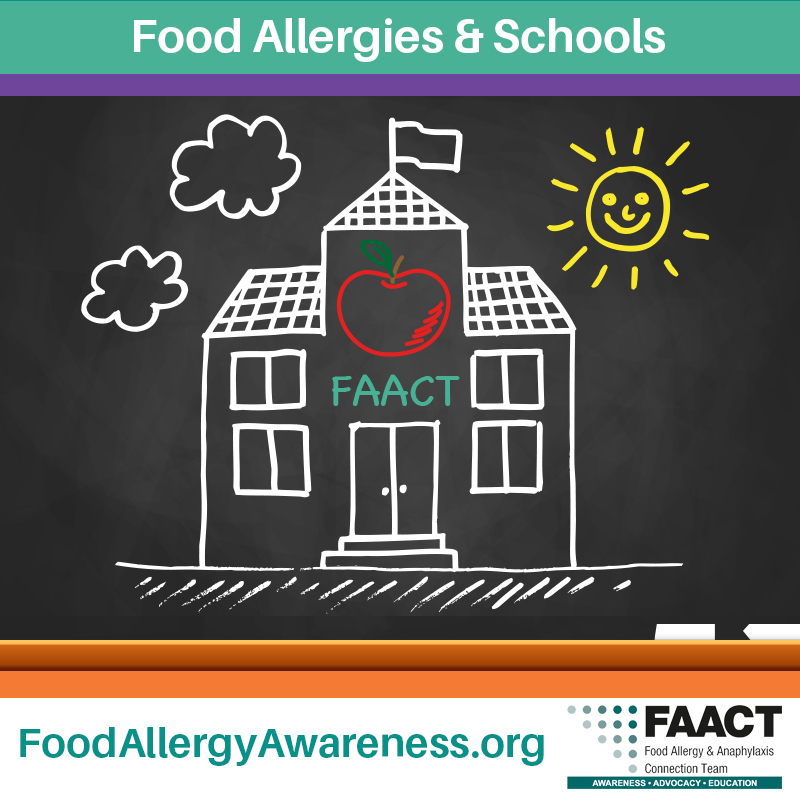Food Allergies & Schools

Food Allergies and Schools
Food allergies continue to rise – especially among children – and are a safety and public health concern across the United States. School staff continue to face challenges each school year due to the increasing number of students with food allergies entering school. Parents continue to struggle as they prepare to send their child off to school, whether it’s a daycare center; private, or public school; church program; or college.
Reports on food allergies, prevalence, and allergic reactions in the school setting confirm the need for further education, awareness, and teamwork among school staff and parents. A combined effort among school staff, parents, and others who care for food-allergic students helps to create a more safe, healthy, and inclusive school environment for the student.
It’s important to note that in caring for food-allergic students, school personnel, family members, and the student (depending on his or her age) all have a responsibility and play a key role in the daily management and safety of the student. Working together, a thorough management plan can be developed that will help to support the efforts of all those involved in caring for students with life-threatening food allergies.
More information on food allergies in the school setting for both school personnel and for parents, including downloadable checklists, can be accessed through the links below or by visiting FAACT’s Education Resource Center.
- FAACT's Food Allergy Curricula Program for Schools
- FAACT's School Lunchroom Poster
- For School Personnel
- For Parents
- Centers for Disease Control and Prevention (CDC) Voluntary Guidelines for Managing Food Allergies in Schools and Early Care and Education Programs
- School Access to Emergency Epinephrine Act
- The Need for Stock Epinephrine Auto-Injectors and Comprehensive Food Allergy and Anaphylaxis Management Plans in Schools, an Article Review

